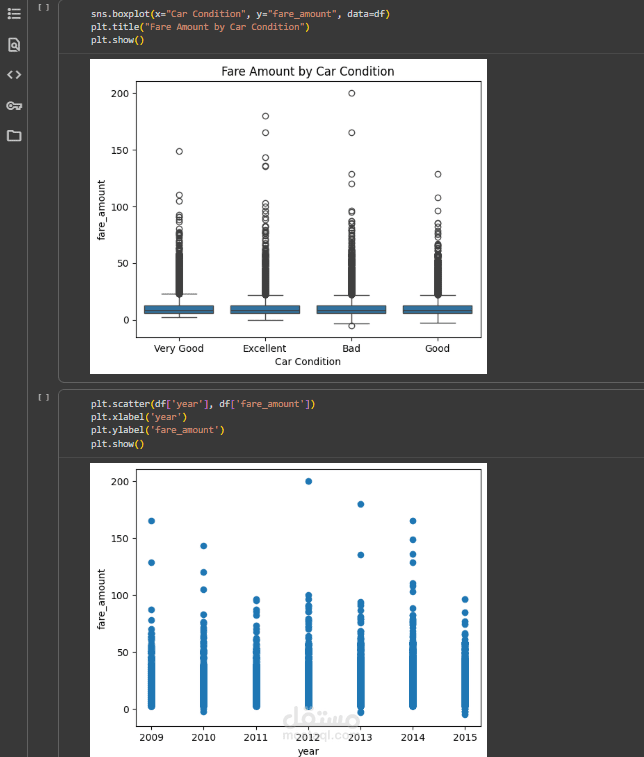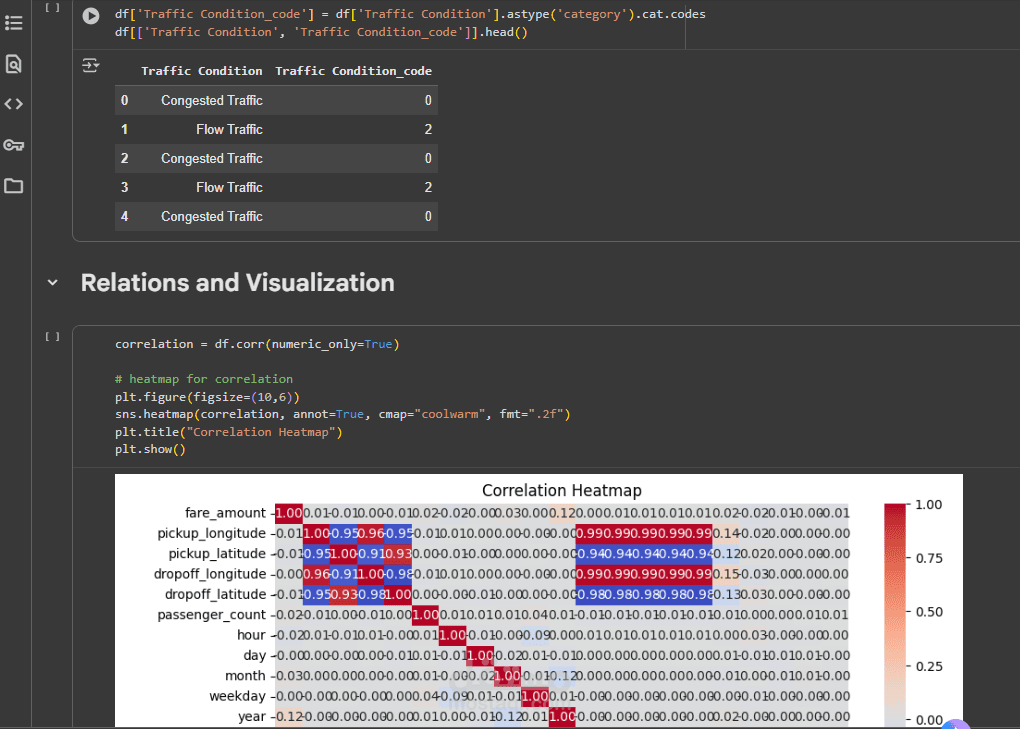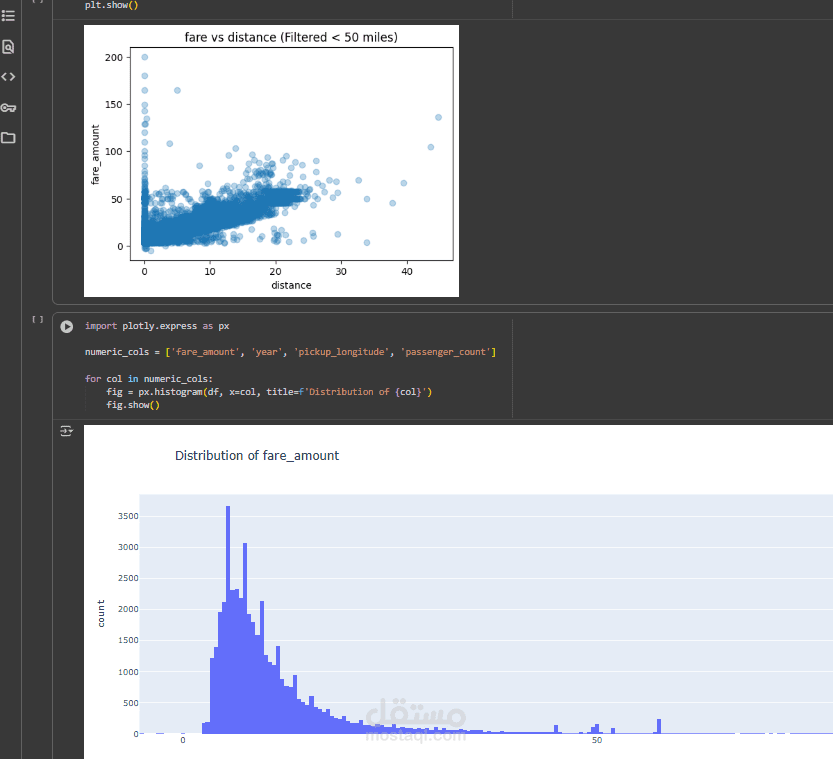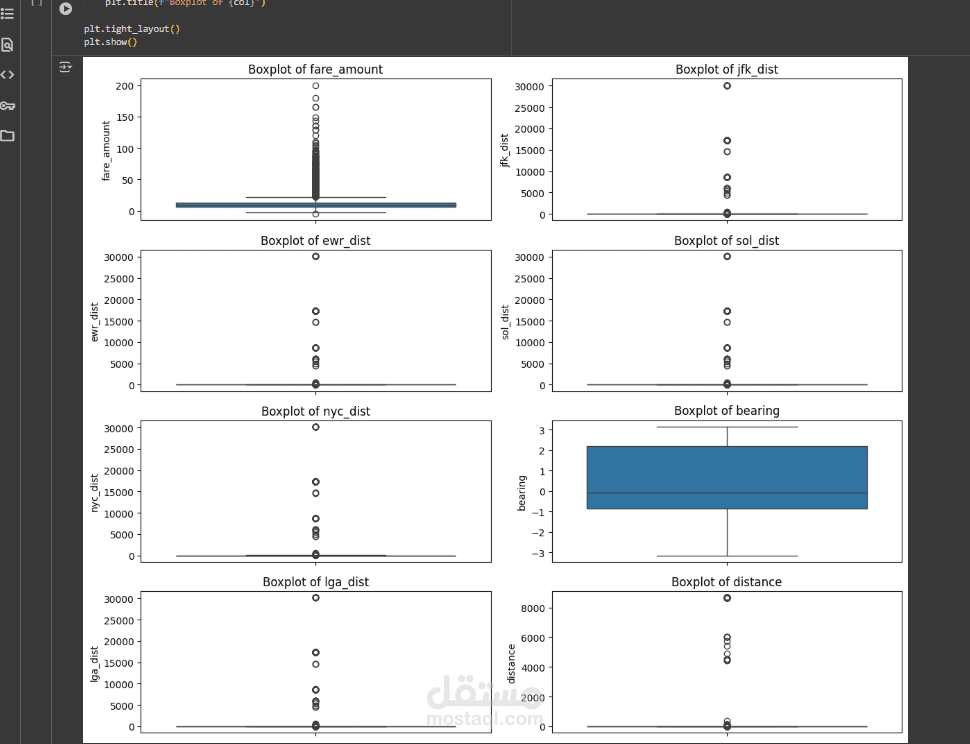uber data analytics
تفاصيل العمل
Project Documentation: Uber Fare Analysis
1. Introduction
This project analyzes Uber ride data to identify key factors that affect fare amounts. The workflow includes data import, cleaning, preprocessing, exploratory data analysis (EDA), visualization, and building predictive machine learning models.
________________________________________
2. Data Import
Imported libraries: pandas, numpy, matplotlib, seaborn, plotly, sklearn
Loaded dataset final_internship_data.csv into a pandas DataFrame
________________________________________
3. Data Cleaning
Removed duplicates to ensure unique records.
Handled missing values by dropping rows with nulls.
Filtered invalid fares:
Removed fares under $0 (not realistic).
Kept fares within a reasonable range ($3 – $30) based on domain knowledge.
Checked for outliers in numerical columns such as fare_amount and distance.
________________________________________
4. Data Preprocessing
Categorical Features:
Encoded categorical variables (Weather, Car Condition, Traffic Condition) using One-Hot Encoding.
Numerical Features:
Standardized numerical variables (e.g., distance, year) using StandardScaler.
Target Variable:
fare_amount was separated from the feature set (X) to be predicted by models.
________________________________________
5. Exploratory Data Analysis (EDA)
Key Visualizations & Findings:
Car Condition vs. Fare
Boxplots showed little to no impact of car condition on fare.
Distance vs. Fare
Scatter plots revealed a strong positive relationship: fares increase with distance.
Passenger Count
Around 70% of rides had only 1 passenger, showing Uber is mostly use individually.
Time of Day
Highest fares occurred around 5 AM, possibly due to airport rides or surge pricing.
Day of Week
Monday had the highest ride requests (first working day after the weekend).
Fare Range
oMost fares fall between $3 and $30.
________________________________________
6. Machine Learning Models
Linear Regression
Built a multiple linear regression model using features like distance, weather, traffic,and passenger count.
Result: Captured trends but limited accuracy due to non-linear relationships and noise in data.
Random Forest Regression
Trained a Random Forest model for better accuracy.
Benefits:
Handles non-linearity better
Less sensitive to outliers.
Higher accuracy compared to linear regression.
________________________________________
7. Model Workflow
Split dataset into training (80%) and testing (20%).
Applied preprocessing (encoding + scaling).
Trained models:
Linear Regression (baseline model).
Random Forest Regressor (improved model).
Evaluated model performance using R² score and Mean Squared Error (MSE).
________________________________________
8. Results
Car condition: not a major factor in fare prediction.
Distance: most significant predictor (strong correlation with fare).
Passenger count: majority are single-passenger rides.
Time and day: Fares peak around 5 AM and requests are higher on Mondays.
Modeling:
Random Forest outperformed Linear Regression in prediction accuracy.
________________________________________
9. Conclusion
Uber fare prediction is primarily influenced by distance and time factors (hour of day, day of week).
Car condition and traffic had minor influence.
Random Forest is a suitable model for predicting fares compared to simple regression.
________________________________________
Mohamed Mahmoud Elramy





